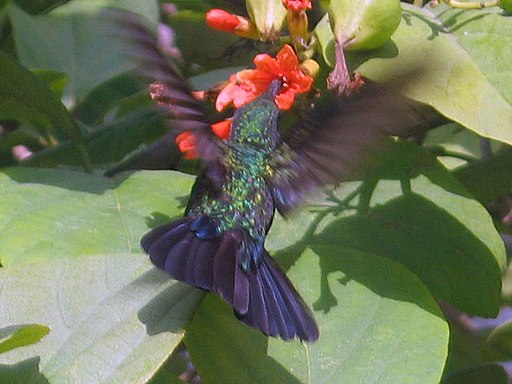Superregnum: Eukaryota
Cladus: Unikonta
Cladus: Opisthokonta
Cladus: Holozoa
Regnum: Animalia
Subregnum: Eumetazoa
Cladus: Bilateria
Cladus: Nephrozoa
Superphylum: Deuterostomia
Phylum: Chordata
Subphylum: Vertebrata
Infraphylum: Gnathostomata
Megaclassis: Osteichthyes
Cladus: Sarcopterygii
Cladus: Rhipidistia
Cladus: Tetrapodomorpha
Cladus: Eotetrapodiformes
Cladus: Elpistostegalia
Superclassis: Tetrapoda
Cladus: Reptiliomorpha
Cladus: Amniota
Classis: Reptilia
Cladus: Eureptilia
Cladus: Romeriida
Subclassis: Diapsida
Cladus: Sauria
Infraclassis: Archosauromorpha
Cladus: Crurotarsi
Divisio: Archosauria
Cladus: Avemetatarsalia
Cladus: Ornithodira
Subtaxon: Dinosauromorpha
Cladus: Dinosauriformes
Cladus: Dracohors
Cladus: Dinosauria
Ordo: Saurischia
Cladus: Eusaurischia
Subordo: Theropoda
Cladus: Neotheropoda
Cladus: Averostra
Cladus: Tetanurae
Cladus: Avetheropoda
Cladus: Coelurosauria
Cladus: Tyrannoraptora
Cladus: Maniraptoromorpha
Cladus: Maniraptoriformes
Cladus: Maniraptora
Cladus: Pennaraptora
Cladus: Paraves
Cladus: Eumaniraptora
Cladus: Avialae
Infraclassis: Aves
Cladus: Euavialae
Cladus: Avebrevicauda
Cladus: Pygostylia
Cladus: Ornithothoraces
Cladus: Ornithuromorpha
Cladus: Carinatae
Parvclassis: Neornithes
Cohors: Neognathae
Cladus: Neoaves
Superordo: Caprimulgimorphae
Ordo: Apodiformes
Familia: Trochilidae
Subfamilia: Trochilinae
Genus: Anthracothorax
Species: Anthracothorax viridis
Name
Anthracothorax viridis (Audebert & Vieillot, 1801)
Type locality: 'lies de l'Amerique Septentrionale' = Puerto Rico.
Synonyms
Trochilus viridis (protonym)
References
Audebert, J.B. & Vieillot, L.J.P. 1801. Oiseaux dorés ou à reflets métalliques. Tome Premier. Histoire naturelle et générale des colibris, oiseaux-mouches, jacamars et promerops. 156 pp. + 70 tt. Desray. Paris. 1802. pl. 15 BHL Reference page. p. 39 BHL
Vernacular names
English: Green Mango
español: Mango portorriqueño
français: Mango vert
Nederlands: Groene Mango
svenska: grön glanskolibri
The green mango (Anthracothorax viridis) is a large species of hummingbird in the subfamily Polytminae. It is endemic to the main island of Puerto Rico.[3][4]
Taxonomy and systematics
The green mango's relationship to the other species of genus Anthracothorax has not been settled.[3][4][5][6] The species is monotypic.[3]
Description
The green mango is 11 to 14 cm (4.3 to 5.5 in) long and weighs about 7 g (0.25 oz). The sexes are alike except that the female has a tiny white spot behind the eye. Adults' upperparts are emerald green, their underparts metallic blue-green, and their tail metallic blue-black with white tips to its feathers. Immatures have a brownish tinge to the head and back.[7]
Distribution and habitat
The green mango is found only on Puerto Rico. It primarily inhabits forests and plantations in the central and western mountains and is most common between 800 and 1,200 m (2,600 and 3,900 ft) of elevation. It is rare in coastal areas.[7]
Behavior
Movement
The green mango makes altitudinal movements in response to seasonal changes in the timing of flowering.[7]
Feeding
The green mango feeds on both nectar and arthropods. It takes nectar from a wide variety of flowering trees, shrubs, and vines, and males defend flowering trees. Insects are mostly taken on the wing and spiders from leaves and bark. It forages from the low understory to above tree-top level.[7]
Breeding
The green mango's nesting season spans from October to May. It makes a cup nest of soft plant fiber with lichen on the outside. It is attached to a vertical branch, usually at least 8 m (26 ft) above the ground. The clutch size is two eggs. The incubation period and time to fledging are not known.[7]
Dickcissel male perched on a metal pole singing, with neck stretched and beak open.
Songs and calls
Listen to green mango on xeno-canto
Vocalization
The green mango is not highly vocal. It does have a song, "a repeated high-pitched phrase commencing with a drawn-out buzz, 'szzzzz-szi-szi-chup-tsz-tsz.....'." Its calls include "a repeated short 'tsik' and a high-pitched twittering trill." It makes harsh rattles and chatters during agonistic encounters.[7]
Status
The IUCN has assessed the green mango as being of Least Concern, though its population size and trend are not known.[1] It is considered common in the mountains and "readily accepts man-made habitats" such as coffee platations.[7]
References
BirdLife International (2016). "Green Mango Anthracothorax viridis". IUCN Red List of Threatened Species. 2016: e.T22687143A93142049. doi:10.2305/IUCN.UK.2016-3.RLTS.T22687143A93142049.en. Retrieved 11 November 2021.
"Appendices | CITES". cites.org. Retrieved 2022-01-14.
Gill, F.; Donsker, D.; Rasmussen, P. (July 2021). "IOC World Bird List (v 12.1)". doi:10.14344/IOC.ML.11.2. Retrieved January 15, 2022.
HBW and BirdLife International (2020) Handbook of the Birds of the World and BirdLife International digital checklist of the birds of the world Version 5. Available at: http://datazone.birdlife.org/userfiles/file/Species/Taxonomy/HBW-BirdLife_Checklist_v5_Dec20.zip [.xls zipped 1 MB] retrieved May 27, 2021
"Check-list of North and Middle American Birds". American Ornithological Society. June 29, 2021. Retrieved August 9, 2021.
Clements, J. F., T. S. Schulenberg, M. J. Iliff, S. M. Billerman, T. A. Fredericks, J. A. Gerbracht, D. Lepage, B. L. Sullivan, and C. L. Wood. 2021. The eBird/Clements checklist of Birds of the World: v2021. Downloaded from https://www.birds.cornell.edu/clementschecklist/download/ Retrieved August 25, 2021
Schuchmann, K.L. and P. F. D. Boesman (2020). Green Mango (Anthracothorax viridis), version 1.0. In Birds of the World (J. del Hoyo, A. Elliott, J. Sargatal, D. A. Christie, and E. de Juana, Editors). Cornell Lab of Ornithology, Ithaca, NY, USA. https://doi.org/10.2173/bow.greman1.01 retrieved January 18, 2022
Retrieved from "http://en.wikipedia.org/"
All text is available under the terms of the GNU Free Documentation License


